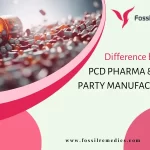What constitutes the profit margin within the pharmaceutical industry?
You run a business to earn money and not for charity. Therefore, profit margin is something that you are always interested in. Whether it is a pharma manufacturing company, a distribution business, or a pharma franchise company, you need a good return for every penny spent by you.
But, experts say that the calculation of profit margin is not straightforward. It varies from company to company.
One has to deeply dive into the business strategy of the company to calculate the margin in the pharma sector.
The margin also depends on factors, such as whether there are branded medicines or generic ones, what is the brand value, the status of the company, the use of ethical or unethical practices, and so on.
Let’s understand the basics of calculating the profit margin of pharma business models.
Aspects that affect profitability
One has to know about the distribution channel in the pharmaceutical sector through which the profit share is divided.
Typically, a distribution channel could be the company, C&F Agent, Stockiest, Distributor, Retail, Chemist, Pharmacy, and so on.
As far as the division of the profit margin is concerned, it is divided between these firms or individuals. Other than these entities, there could be some other entities as well.
As we mentioned, ethical or unethical practices also determine profitability. It is because if unethical practices are used, then the profit margin may be many times greater than actual profit margins.
Unethical practice means selling medicines at a much higher price than its actual cost and after adding all types of profits. In this case, the price mentioned in the pcd pharma product list is exorbitant.
So if such a thing is done, then the company will have a much higher profit margin. It is needless to mention that such a profit margin is not a realistic one.
Another aspect that determines the profitability of a pharma business is its operating expense. When there is a big sales team, staff members, and executives, the cost will be much higher. Not just that, the company has to invest in maintaining stock, machines and plant, marketing and promotion, advertising, and so on. The bigger the expense is, the lesser the profit margins.
Sales turnover is also an aspect. However, there is not a direct proportion of it. If the company is taking low margins, then it will earn lesser profits despite selling large volumes.
Competition is another vital element that impacts profitability. This is because trade rate fixation and MRP, etc. will impact the profit margin.
The profit margin of a retailer or pharmacy will be around 16-22% percent if the medicines are medicines. In generic medicines, it can be 20-50%.
A distributor’s margin is around 8 to 12 percent on branded medicines and 10 to 20 percent on generic medicines.
A Stockiest margin is approximately 6 to 10% for branded medicines and 8 to 15% for generic medicines.
If it is a Carrying and Forwarding Agent, then the profit margin is approximately 4 to 8 percent.
These are various pharma business models and their profit margins.
Also Read:
Financial Planning and Management Tips for PCD Pharma Franchise Owners








